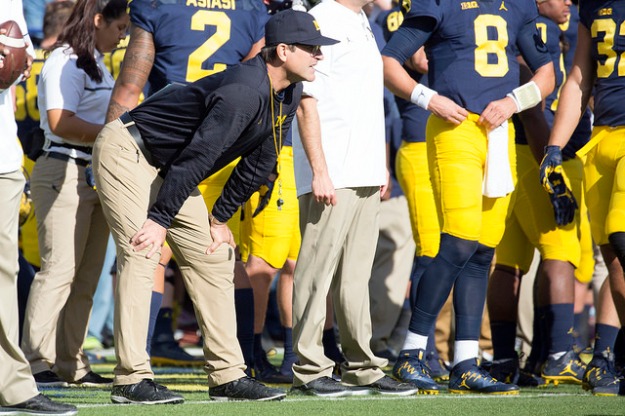
Bryan Fuller / MGoBlog
HOW’D WE DO LAST YEAR (AND THE YEAR BEFORE)?
2019 UPDATE: Last year was not a good one for the criteria picks. None of the suggested teams (Kentucky, Duke, North Carolina, Purdue) made the Final Four, though there was solace in Villanova, the top team according to the championship criteria, winning it all. I’ve left the 2017 results intact below; thus far the criteria has one really good year and one really bad year under its belt.
2018 UPDATE: Not bad, actually. Two of our criteria picks (Gonzaga, North Carolina) made the Final Four, and a third, Oregon, had only 0.5 criteria DQs. South Carolina, the token sleeper, only had 2 criteria DQs. Following the criteria to a tee also got us 28 out of 32 first round games correct and the biggest upset, seed-wise, of the 2nd round, 8-seed Wisconsin over 1-seed Villanova.
It was not perfect – it was also not meant to be. Onward and upward.
—————-
If you’re here, you’re probably familiar with the
original research and
2018 update; I will spare you the tedium of wading through the same article again and cut right to the chase this year. Here are how the 2019 Final Four and championship contenders stack up, according to the criteria:
FINAL FOUR CONTENDERS (3/18/19):
Virginia – 1 (AdjTempo rank of 353)
Gonzaga – 0
Duke – 0
Michigan State – 0
Michigan – 1 (AdjTempo rank of 320)
North Carolina – 0
Kentucky – 0
Tennessee – 0
Texas Tech – 1 (unranked in preseason AP poll)
Purdue – 1 (3PA/FGA rank of 40)
Virginia Tech – 2 (3PA/FGA rank of 37, AdjTempo of 337)
Wisconsin – 4 (AdjOE rank of 52, AdjTempo of 332, unranked in preseason AP poll, FTR of 219)
Auburn – 2.5 (AdjDE rank of 45, 3PA/FGA rank of 8, FTR of 199 is close)
Houston – 3.5 (3PA/FGA rank of 73, FTR of 228, unranked in preseason AP poll, caution required with Luck rank of 50)
LSU – 1 (AdjDE rank of 62)
Kansas – 1 (Luck rank of 15)
Mississippi State – 1 (AdjDE rank of 51)
Kansas State – 3 (AdjOE rank of 102, FTR of 226, AdjTempo of 342)
Marquette – 2 (3PA/FGA rank of 98, unranked in preseason AP poll)
According to this criteria, the best Final Four bets (per region) are as follows: Gonzaga, Duke, North Carolina, and Tennessee. Don’t hesitate to go with Virginia in the South, though (only 1 criteria DQ and would be a clear favorite against Tennessee on a neutral court).
CHAMPIONSHIP CONTENDERS (3/18/19):
Virginia – 0
Gonzaga – 0
Duke – 0
Michigan State – 0
Michigan – 1 (didn’t win a title)
North Carolina – 0
Kentucky – 2 (EM rank of 7, didn’t win a title)
Tennessee – 2 (EM rank of 8, didn’t win a title)
According to this criteria, the best bets for champion are as follows: Virginia, Gonzaga, Duke, Michigan State and North Carolina.




